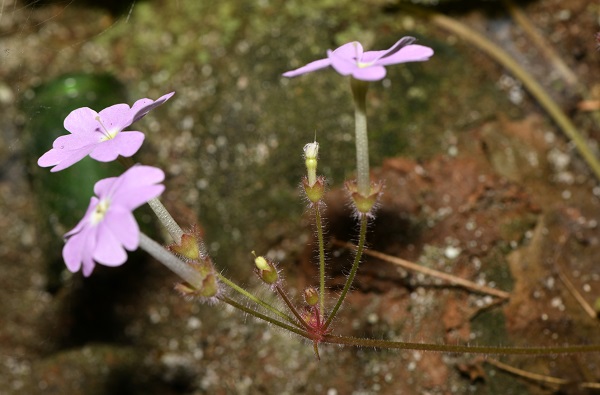
Primula is the largest genus of the primrose family (Primulaceae). Up to now, more than 300 Primula species have been recorded in China. The key characters of Primula are its comparatively stout rhizomes, cup-shaped calyxes and globose and valved capsules.
During systematic botanical research in Cangyuan County, Yunnan Province, southwestern China, researchers from Xishuangbanna Tropical Botanical Garden (XTBG) of the Chinese Academy of Sciences found an unknown species of Primula. After careful morphological studies and literature review, the researchers confirmed it as new to science.
Their study was published in Nordic Journal of Botany on Oct. 8.
The new species was named as Primula longistyla, referring to its long style, usually exceeding the corolla.
Primula longistyla is a perennial herb. It is morphologically similar to Primula densa, but clearly different by its larger and densely villous leaves, homostylous flowers, longer and densely villous calyxes, exannulate and villous corollas, longer corolla tube, larger limb and longer styles.
The new species is currently only known from Sigangli Cave, Menglai Township, Cangyuan County, Yunnan Province, China, growing on the stone wall of the karst cave at about 1,180 m above sea level.
The researchers surveyed the type locality four times between 2019 and 2021, and found only one population of Primula longistyla and less than 100 individuals. The researchers assessed the conservation status of the new species as Critically Endangered (CR), according to the criteria of the International Union for Conservation of Nature (IUCN).

Fig. 1 Flowering Primula longistyla. (Image by SHEN Jianyong)

Fig. 2 Habitat of Primula longistyla. (Image by SHEN Jianyong)

86-10-68597521 (day)
86-10-68597289 (night)

52 Sanlihe Rd., Xicheng District,
Beijing, China (100864)

